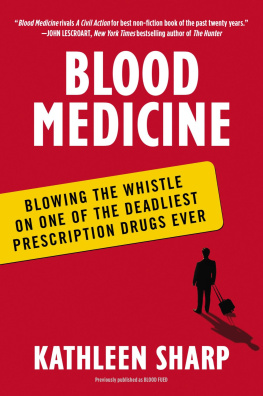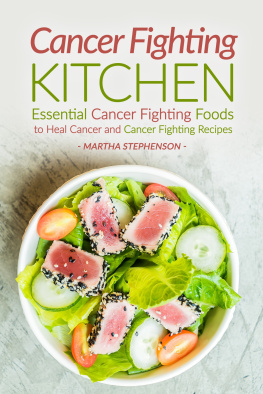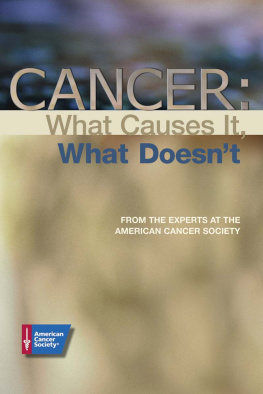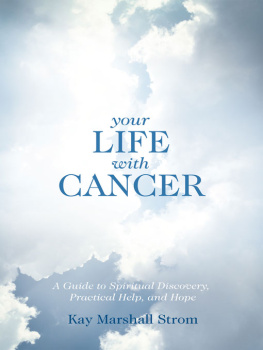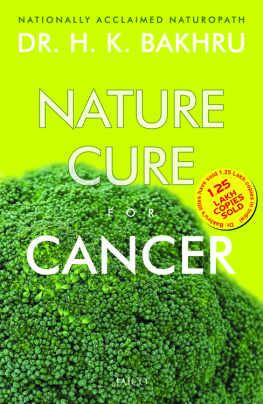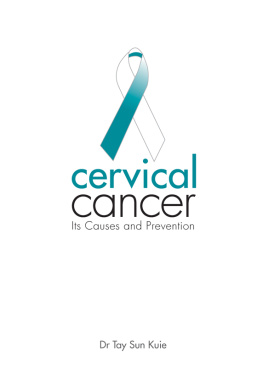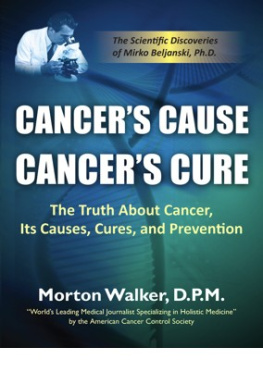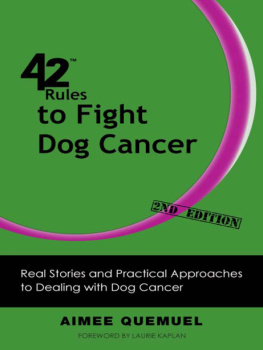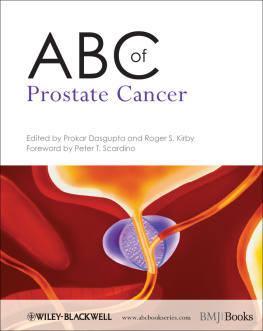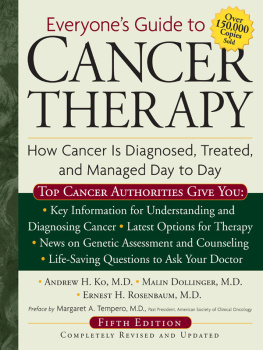

For all those who have lost their lives to cancer
You are remembered with love.
For all those living with cancer
Your courage and determination inspire me.
And
For Howard, Christina, and Marianna
You are my lifes greatest blessings.

CONTENTS
C HAPTER 1
HONORING A COMMITMENT
C HAPTER 2
UNDERSTANDING CANCER
C HAPTER 3
THE PROMISE AND LIMITS OF CANCER SCREENING
C HAPTER 4
CUT, POISON, AND BURN: A LOOK AT TODAYS TREATMENT OPTIONS
C HAPTER 5
WHAT THE MARKET WILL BEAR
C HAPTER 6
PAYING MORE, SETTLING FOR LESS
C HAPTER 7
CANCERS COLLATERAL DAMAGE
C HAPTER 8
SHIFTING THE RESEARCH APPROACH
C HAPTER 9
THE PROMISE OF PREVENTION
C HAPTER 10
CANCER-PROOFING THE ENVIRONMENT
C HAPTER 11
ENDING THE SCOURGE OF TOBACCO
C HAPTER 12
FIGHTING CANCER WITH NUTRITION AND PHYSICAL ACTIVITY
C HAPTER 13
THE POWER OF VITAMIN D
C HAPTER 14
CAN PILLS PREVENT CANCER?
C HAPTER 15
ON THE CUTTING EDGE OF SCIENCE

INTRODUCTION
Pushed Against the Wall
T HE SYSTEM DESIGNED TO STUDY, DIAGNOSE, and treat cancer in the United States is fatally flawed.
We would like to think that we have the tools to detect cancer early enough to cure it and that our treatments are safe and effective. We hope people who have dedicated their lives to cancerscientists in the public and private sectors, oncologists, and advocacy groupsare sharing ideas and data so that, together, they can make progress. We assume that the vast network of government-funded research encourages bold and imaginative new ideas. We trust that compassion, not the quest for professional advancement and profits, is the primary driver of the cancer establishment. Sometimes, all of that is true. Too often, it is not.
For years, I have been observing the cancer culture in the United States, and I have become convinced that it is not structured to do what we most need: to determine how to prevent cancer, and then implement our discoveries. Despite decades of promises and a vast amount of funding, the current model of research has failed us. We no longer expect to cure cancer and now talk mostly about living longer with the disease. We are not doing enough to pursue promising new approaches to prevention, and we are not dedicating sufficient energy to applying the strategies that already work.
The good news is that it doesnt have to be this way.
My driving commitment to shift the national approach to cancer from treatment to prevention is at once urgent and personal. A World Without Cancer was born through my own life experiences with cancer, as a physician, a wife, a mother, a daughter, a sister, and a friend.
My efforts are inspired by people like Nancy, a smart, savvy businesswoman, a bon vivant, and a generous friend. By the time she was admitted to the hospital where I was working during my medical residency, her breast cancer had metastasized. I still recall the fear in her voice one night as I turned away from her hospital bed. Overwhelmed by the insidious invader that had ravaged her body, Nancy was helpless and hopeless. Im afraid. Dont leave me, she pleaded.
It is also to remember Peter. He was a soft-spoken Italian immigrant and a member of my extended family. He put himself through college by working at a shoe factory and went on to build a successful real estate company in New York. For four years, I watched him suffer through treatment after fruitless treatment for colon cancer until he died at the age of 74.
My sister-in-law Penina deserves my efforts as well. Abdominal swelling was her first warning of the peritoneal cancer that would eventually kill her at the age of 47. She combined Chinese herbal medicine with a recommended regimen of surgery, chemotherapy, and radiation, but it proved no match for the disease.
Gregg will always be remembered for his valiant fight to survive lung cancer, accepting all available treatments and their brutal side effects until his death at age 68. His story of courage and hope will live forever on these pages.
My dear friends Alba, Bridget, Carol, Irene, Oksana, and Rosemary and my cousin Nina all succumbed to cancer in their 40s and 50s. Each one of them wanted desperately to survive, and each was a cooperative patient who carefully followed the recommendations of her oncologist. I wish that there had been more to offer them all.
I loved and respected every one of them. I watched their suffering, and I know they all deserved better. They are with me still.
For them, and for Caroline, Joie, Lynne, Richard, Sherry, Susan, Toni S., and many others who shared their perspectives with me as cancer patients, let me be clear: It is time to transform the cancer culture as we know it.

In 1992, I was a young doctor working as a radiologist in the outpatient mammography division of a leading teaching hospital. On any given day, our waiting room was filled with women scheduled for a routine screening mammogram. Among them were patients who needed a follow-up scan because a previous one had shown an abnormality. Others were there because they had felt a breast lump, or their doctors had. Occasionally, a man came in for a mammogram, reminding me that approximately 1 percent of all breast cancers occur in men.
There was always an undercurrent of anxiety in our department, even among the women who were just getting their annual test. Everyonepatients, family members, and doctorsknew that the results of the test could change a persons life in an instant.
Understandably, women who had already been treated for breast cancer were the most apprehensive. Nothing was routine about their tests. We were looking for any sign to suggest that the disease had returned, and their fear was almost palpable.
That was the situation of a 48-year-old woman Ill call Mrs. Thomson. Two years earlier, she had undergone surgery and chemotherapy for cancer in her left breast. The following year, she received the grim news that the cancer had recurred, and she underwent another operation. Now, six months post-treatment, she had come for a follow-up mammogram at the hospital where I was working. Her husband accompanied her, and from the moment I met them, I could sense their worry. Mr. Thomson, especially, was tense and belligerent. Almost immediately after we introduced ourselves, he told me that his wife had been through the mill and that they had had just about enough of visits to doctors offices.

At that point in my career, I was a seasoned professional, a board-certified radiologist. Not only had I been well trained but I had attended conferences on mammography conducted by world-class, highly respected experts. I understood the science, but I also understood the fear. I tried hard to be patient, sensitive, and empathetic in my interactions with people facing so much uncertainty. It was my goal to treat patients just as I would hope to be treated myself under similar circumstances.
From the beginning of my training, I had been mentored by very attentive and careful radiologists. These doctors always communicated directly and kindly with each patient before they left the mammography room. In most cases, they were able to say that their initial review did not indicate any suspicious findings, while emphasizing that they would review the mammogram more thoroughly and send the final report to the referring physician. Those were the happy times, when the patient would smile gratefully and thank the doctor.
Next page

